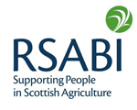Potash is often blamed for killing cows which succumb to grass staggers. It is a fact that potash renders the magnesium in pasture less available and grass staggers may result so careful use of potash in spring and autumn when stock are susceptible to staggers is definitely recommended.
Potash however is of key importance to getting the most from grass, especially silage and increasingly we are seeing good rotational grass which is being mismanaged through lack of potash application. Potash fulfils a number of roles in the well-being of grass. It is required to develop and maintain the strength and structure of the foliage. Potassium also plays a role in sugar formulation, assists root development and is involved in the transport of metabolites and nutrients within the plant.
Potash is a fickle nutrient to contend with. If you apply too much the crop will utilise it but this can be wasteful and is known as luxury uptake. Apply too little and grass and clover production are penalised. The leaves are light green and do not produce to their full potential. In badly deficient situations, the tips of the leaves go yellow and grass production is significantly reduced. Root development is restricted and this, together with less efficient control of leaf transpiration, results in wilting during drought. Potassium deficient grass also lacks winter hardness. In addition, clover is very susceptible to potash deficiency. The leaves brown around the margins brunching of stolons and size of leaf are reduced and the clover may eventually disappear from the sward.
Achieving the correct and safe balance in the application of nitrogen, phosphate and potash is key to getting the most from grass – both grazing and cutting.
In a grazing situation the soil index of both phosphate and potash should be maintained annually by applying approximately 35-40 kg/ha over the season at times when it is safe to do so.
In cutting grass it is often said that good heavy crops of multi-cut silage literally mines the potash out of the ground. Regardless of whether you take one big cut of silage or multi-cut, the yield of silage and subsequent regrowth is very dependent on potash. In order to avoid depleting soil potash reserves the amount you apply should be approximately 55-60% of the nitrogen application towards any given cut. This is often complicated by the application of dung or slurry but the principle remains the same and it is essential to calculate the correct balance required to feed the grass crop efficiently. It is also important to apply potash post cutting to achieve a good recovery.
All too often we see good rotational grass looking poor and underperforming towards the second half of the season especially after it has been cut. The classic symptoms of potash deficiency such as light green in colour with yellow tipped leaves are regularly in evidence and in contrast where there is a dung or urine patch on these fields, the grass is healthy looking and thriving. The animal production from these fields could be improved dramatically with better use of potash leading to improved grass recovery.




